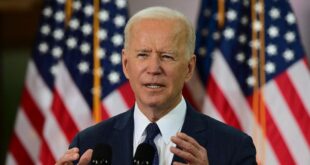
One simple statistic goes a long way toward summing up the state of play in actively-managed exchange-traded funds: the share of all ETFs run by active managers has increased a whopping 50% over the past 12 months: to 3%, according to data from CFRA/Frist Bridge, from 2% last year.
Put another way, there is enormous industry enthusiasm and buzz — not to mention media attention — over something that’s taking a while to materialize, and whose eventual impact is altogether uncertain.
“I don’t know if there are any categories in which it’s better to choose an active manager,” said Todd Rosenbluth, head of mutual fund and ETF research for CFRA. “If you can find the right manager, that’s great, but he or she could just as easily not perform in the future.”
Numerous studies show that active managers not only don’t beat passive strategies over the long term – but in many cases, their funds don’t even survive. Investors seem to understand that reality – as do advisers.
“The data and evidence pretty clear about the challenges of traditional active managers underperforming,” said Nick Ryder, CIO of Philadelphia-based Kathmere Capital Management . “We also look at hedge fund data – the best and the brightest have struggled.”
Still, many industry participants continue to think change is coming, and to be open to embracing it. In a mid-October ETFTrends.com survey of nearly 600 advisers, more than half said they were “somewhat” more likely to increase exposure to active strategies and 27.5% said they were “very” likely.
Some of that interest is probably being driven by some of the buzz around managers themselves. In 2020, the first “actively-managed non-transparent” ETFs launched. Such products allow fund managers to retain most of what’s preferable about ETFs compared to mutual funds – tax benefits, tradability, for example – but keep their strategies closer to their chests than traditional ETFs, which require daily disclosures of holdings.
“Active managers have generally felt that putting holdings and strategies out there invites front-running and that they’d be giving away their secret sauce,” said Amrita Nandakumar, president of Vident Investment Advisory, a firm that helps ETF issuers manage funds. “Now they have the opportunity to use a different vehicle where they can hide or at least mitigate the disclosure of things they see as valuable.”
Many – if not most – investors “are comfortable using index funds and believe in low-cost diversification,” Nandakumar said in an interview. “I don’t expect those folks will be pulled back to active now.”
Active managers with a name or a particularly well-known strategy or idea may attract new investors if they launch ETFs, she thinks, or retain existing clients happy with their results if they transition to the ETF vehicle. And there are some corners of the market where investors seem more comfortable trusting a manager who’s proactively picking securities to an index on autopilot.
Active managers generally seem to do better at picking fixed-income securities than equities, Rosenbluth noted. He’s skeptical about other areas, though.
“You would think that if active managers knew more than what you’d find in an index, we’d see small-cap mutual funds outperforming, just because there are so many up-and-comers and less Wall Street coverage, that managers should be able to find hidden gems,” Rosenbluth said. “Same thing with emerging markets, one would assume that if you had the resources to go and find the next Alibaba, you’d do that.”
See: Those ‘actively-managed’ ETFs you’ve heard so much about? They’re almost all bond funds
The advisers at Kathmere Asset Management keep an open mind, CIO Ryder told MarketWatch. For one thing, he considers factor investing, which the company has utilized with great success, as a halfway point between active and passive.
Ironically, Ryder thinks some change might also come from wider ETF adoption by new investors and the changes put in place to make trading easier, like fractional shares and zero-cost trades.
MarketWatch has launched ETF Wrap, a weekly newsletter that brings you everything you need to know about the exchange-traded sector: new fund debuts, how to use ETFs to express an investing idea, regulations and industry changes, inflows and performance, and more. Sign up at this link to receive it right in your inbox every Thursday.
